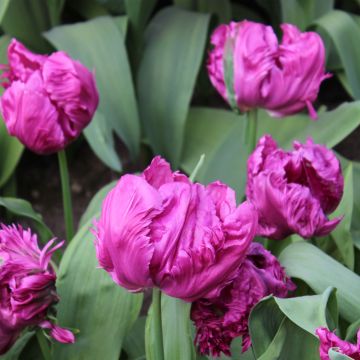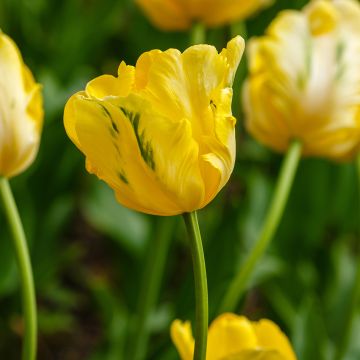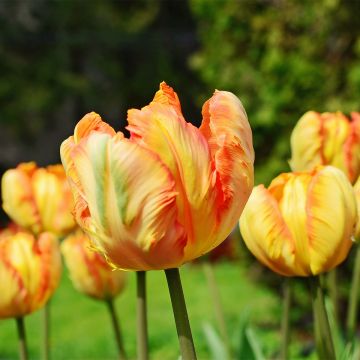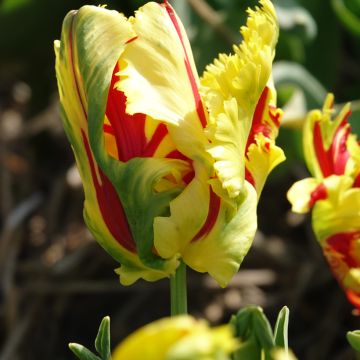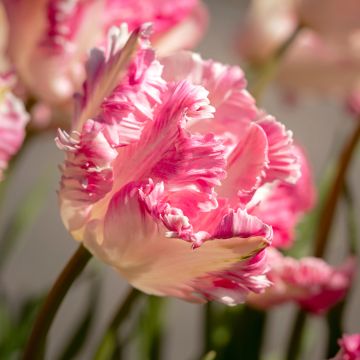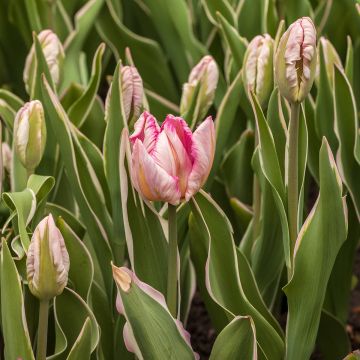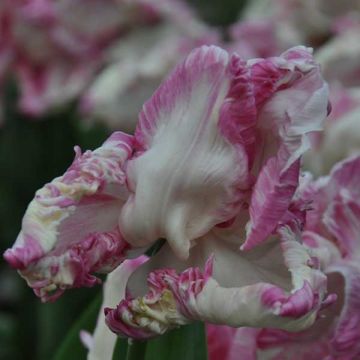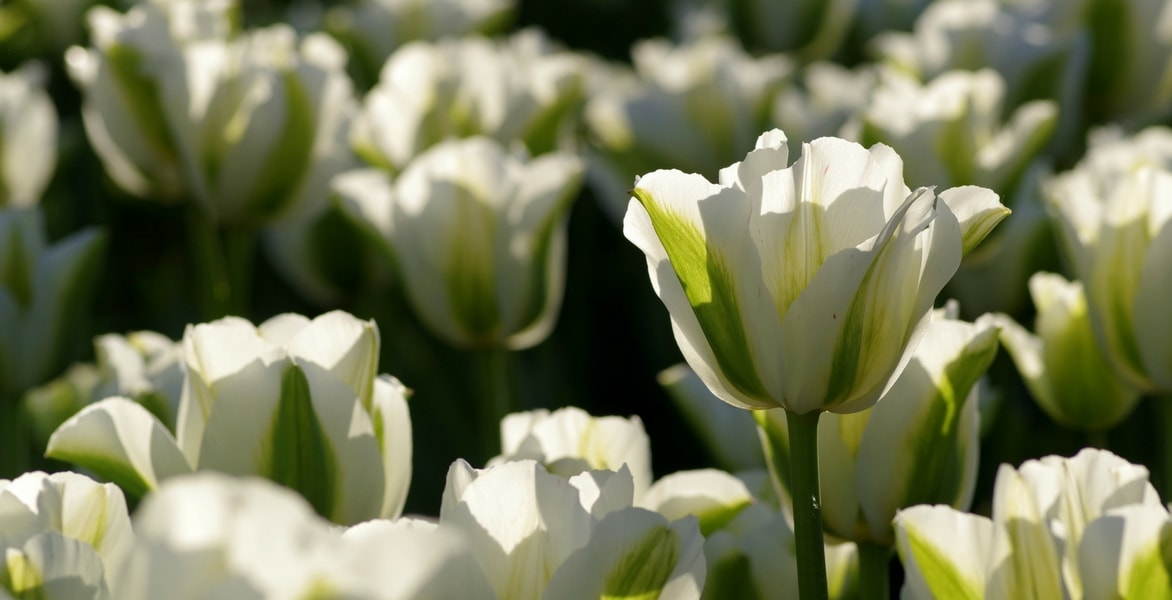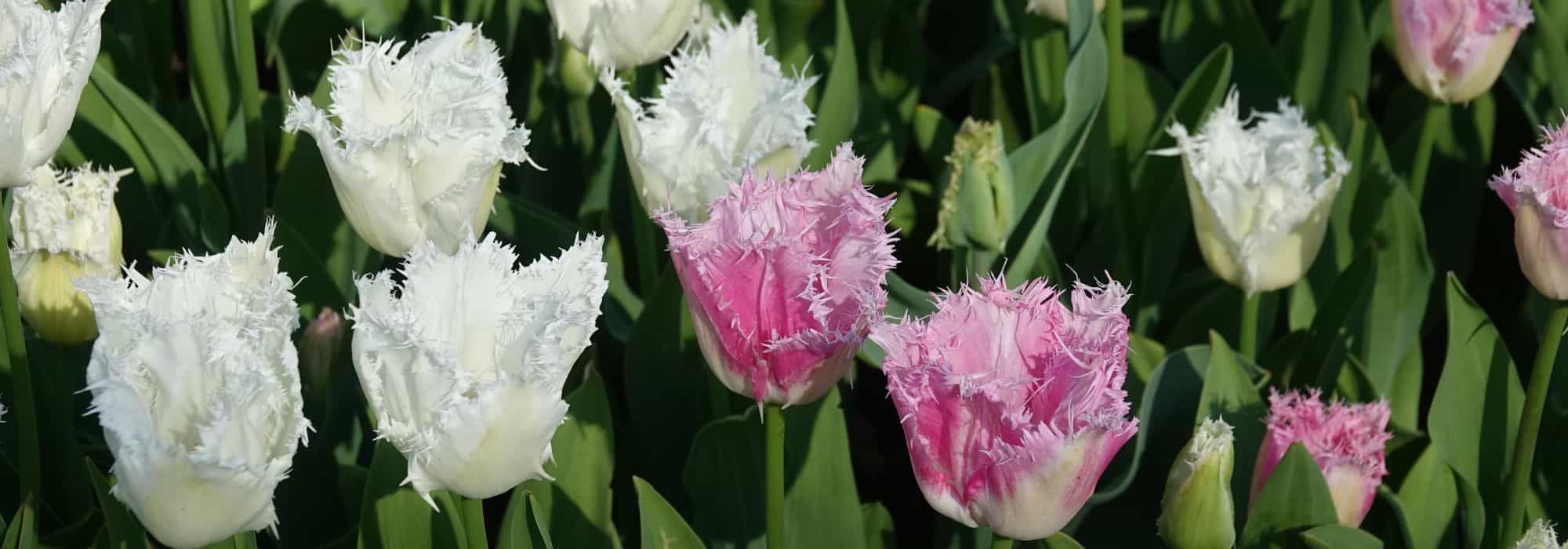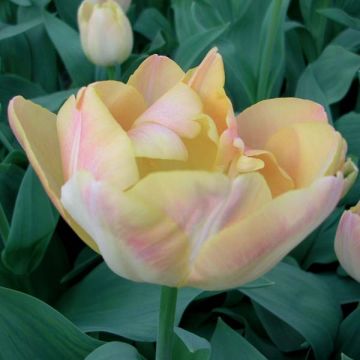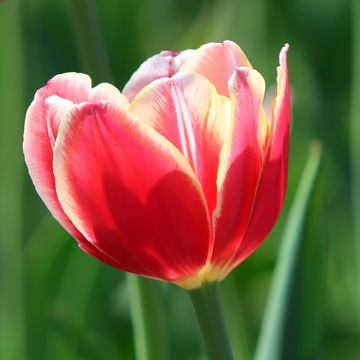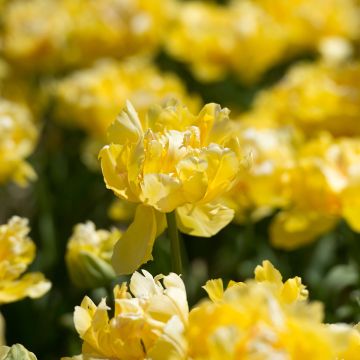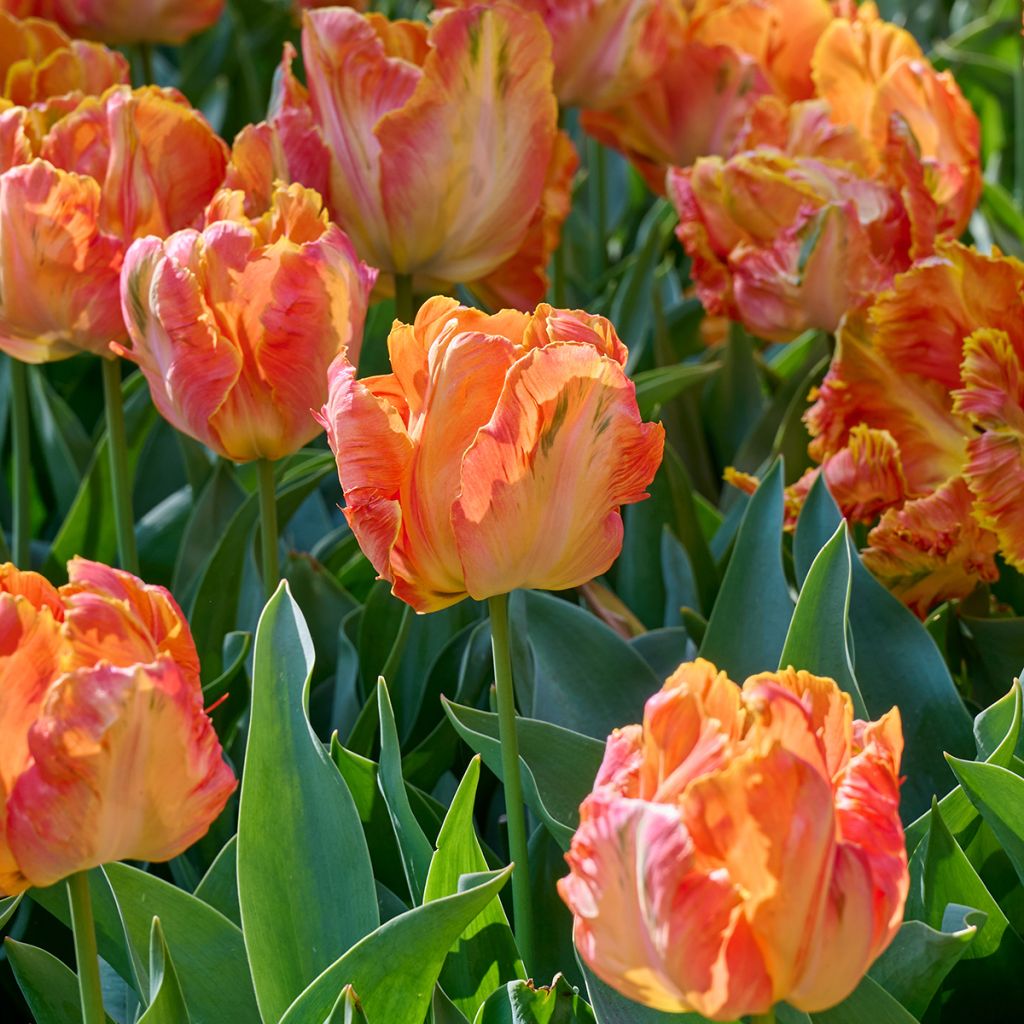

Tulipa Professor Röntgen
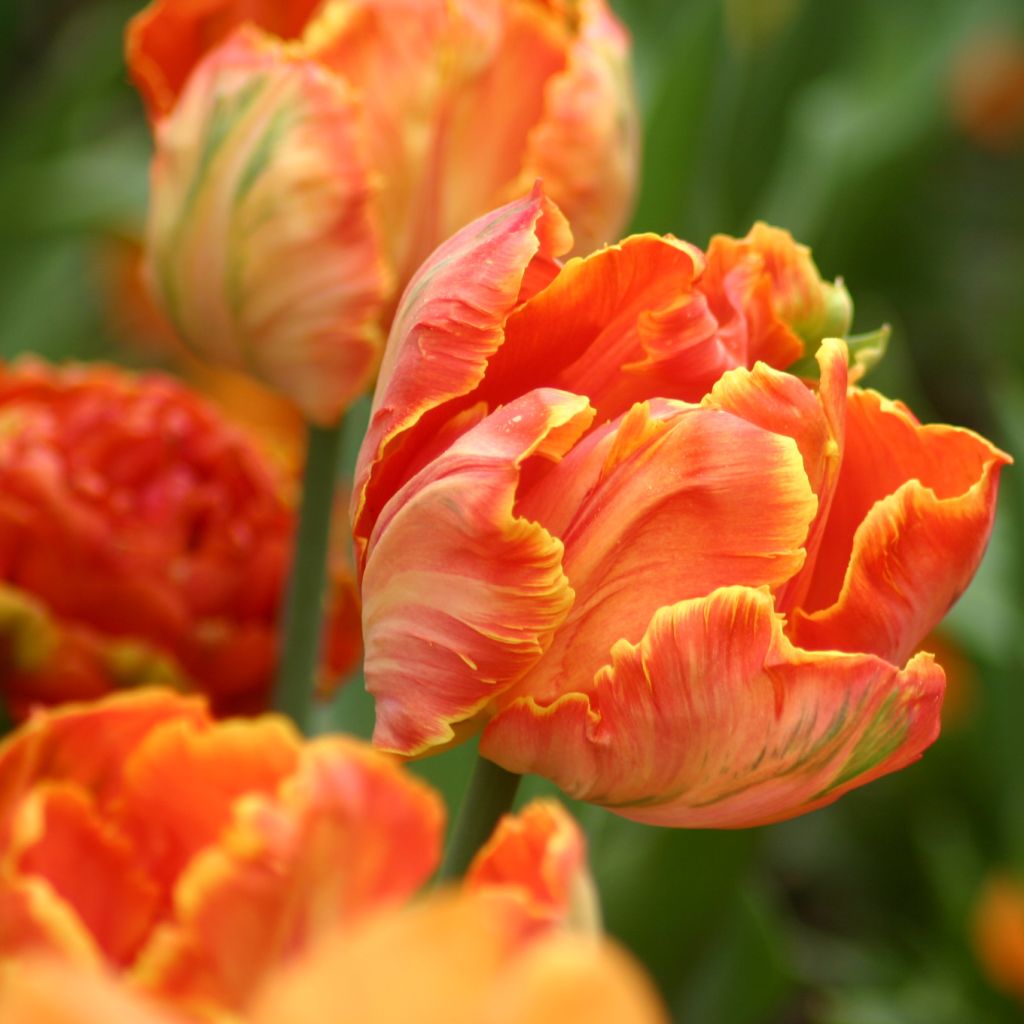

Tulipa Professor Röntgen
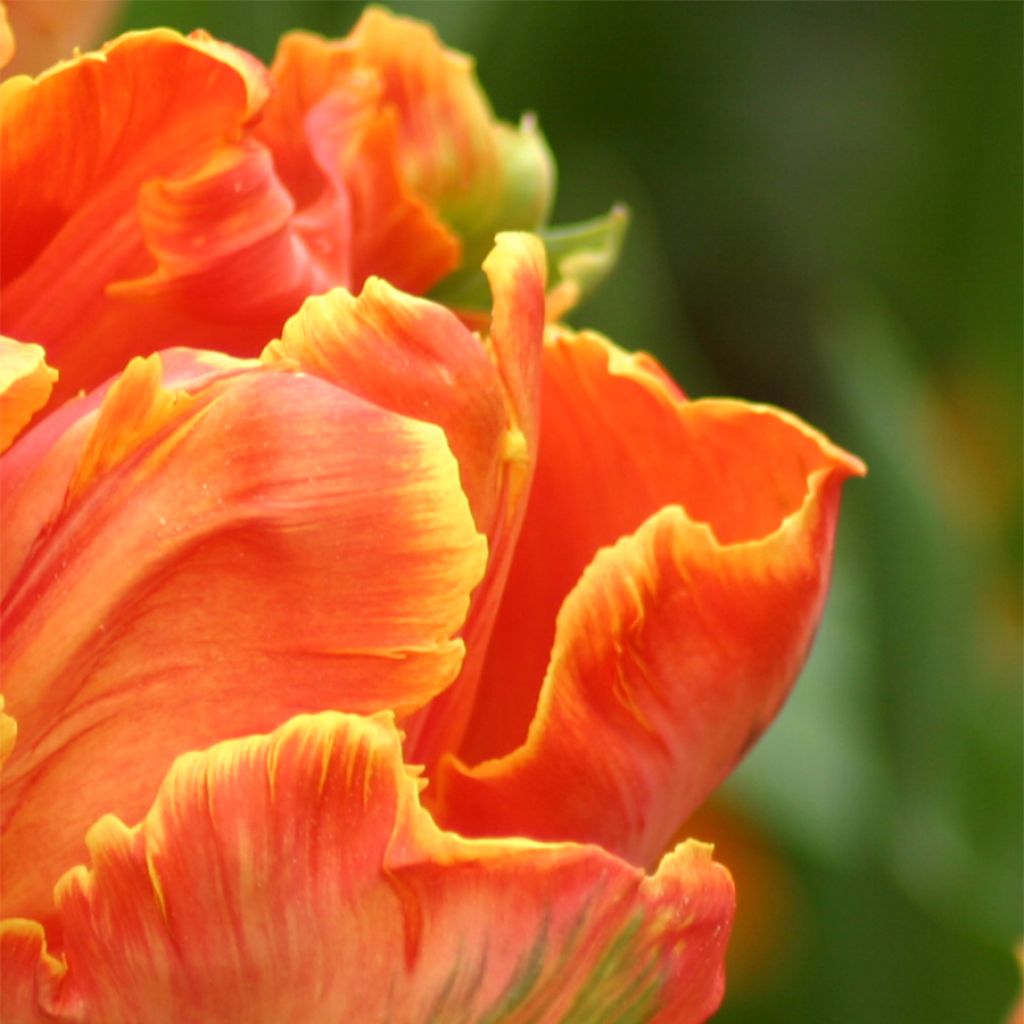

Tulipa Professor Röntgen
Tulipa Professor Röntgen
Tulipa Professor Röntgen
parrot tulip
Superb! Very nice colour in line with the pictures. Very bright. One downside, only 4 bulbs bloomed properly.
Sylviane, 05/05/2021
Special offer!
Receive a €20 voucher for any order over €90 (excluding delivery costs, credit notes, and plastic-free options)!
1- Add your favorite plants to your cart.
2- Once you have reached €90, confirm your order (you can even choose the delivery date!).
3- As soon as your order is shipped, you will receive an email containing your voucher code, valid for 3 months (90 days).
Your voucher is unique and can only be used once, for any order with a minimum value of €20, excluding delivery costs.
Can be combined with other current offers, non-divisible and non-refundable.
Why not try an alternative variety in stock?
View all →This plant carries a 6 months recovery warranty
More information
We guarantee the quality of our plants for a full growing cycle, and will replace at our expense any plant that fails to recover under normal climatic and planting conditions.

Does this plant fit my garden?
Set up your Plantfit profile →
Description
Tulipa 'Professor Röntgen' Parrot Tulip unfolds wavy and swollen petals, blending salmon pink, creamy white and pale yellow, with petals edged in red. All these warm and soft nuances are animated by small green flames that insinuate themselves into the ruffled petals of this tulip. Perched on sturdy stems, this delightful flower concludes the tulip season with a touch of refined originality, happily accompanying flowering perennials. It is also an excellent cut flower in a bouquet of romantic or bohemian inspiration.
The 'Professor Röntgen' Tulip belongs to the lily family. Of horticultural origin, it is a well-loved, widely grown creation of the "parrot" Tulips group, whose main characteristic is huge flowers with twisted, puffed, ruffled, irregularly fringed petals. 'Professor Röntgen' is also obtained through mutation (sudden appearance of new characteristics that are maintained in subsequent generations). It is of medium height, about 40cm (16in), and its flower is large, easily 10cm (4in) in diameter. Its variegated colour palette includes salmon, cream, green, white and orange-red, with wide areas of light yellow. Each flower has its own personality, and each evolves differently over time. The original shape of the parrot tulip adds charm, making this tulip really attractive. The buds open slowly but fully in a vase to reveal a yellow centre. It flowers in late April, at the end of the tulip season.
Parrot tulips are famous for their stunning and variegated flowers, usable both in flower beds and to enhance your bouquets. In the 18th century, they were called "monstrous", but this group developed a lot in the 1930s, when it was discovered that irradiating bulbs with X-rays caused this mutation. Now they are among the most planted varieties. 'Professor Röntgen' Tulip will elegantly adorn a centrepiece or romantic bouquet in shades of fawn.
Parrot tulips are unmatched for bringing fantasy to pots or sunny gardens. Remember to consider height and flowering period when designing your flower beds, as these can vary significantly from one cultivar to another. It is a good idea to plant a few more bulbs for beautiful cut flowers that last a long time in a vase.
Tulipa Professor Röntgen in pictures
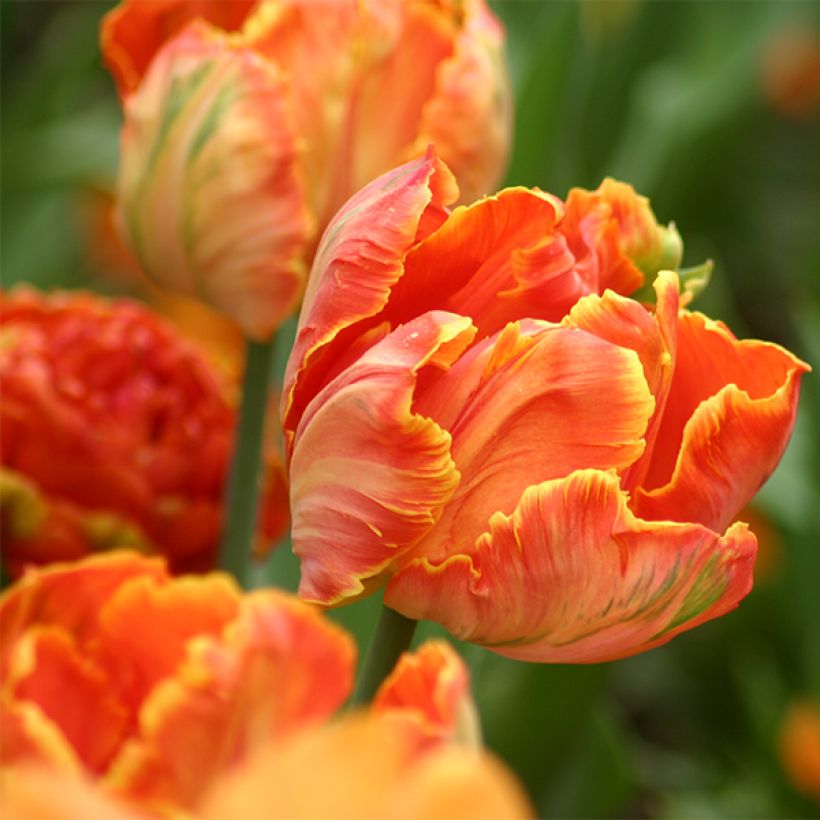

Plant habit
Flowering
Foliage
Botanical data
Tulipa
Professor Röntgen
Liliaceae
parrot tulip
Cultivar or hybrid
Planting and care
Plant the bulbs in autumn, from September to December, at a depth of 15 cm (6in), 10 cm (4in) apart in ordinary, slightly acidic, neutral, or slightly chalky, loose, well-worked, and well-drained soil. Never add manure or poorly decomposed compost to the planting soil, as this could cause the bulbs to rot. 'Professor Röntgen' will thrive in soil which is moist to dry in summer. Place it in a sunny or partially shaded location. After flowering, it is best to remove the seed heads to avoid exhausting the plant.
Planting period
Intended location
Care
Planting & care advice
-
, onOrder confirmed
Reply from on Promesse de fleurs
Similar products
Haven't found what you were looking for?
Hardiness is the lowest winter temperature a plant can endure without suffering serious damage or even dying. However, hardiness is affected by location (a sheltered area, such as a patio), protection (winter cover) and soil type (hardiness is improved by well-drained soil).

Photo Sharing Terms & Conditions
In order to encourage gardeners to interact and share their experiences, Promesse de fleurs offers various media enabling content to be uploaded onto its Site - in particular via the ‘Photo sharing’ module.
The User agrees to refrain from:
- Posting any content that is illegal, prejudicial, insulting, racist, inciteful to hatred, revisionist, contrary to public decency, that infringes on privacy or on the privacy rights of third parties, in particular the publicity rights of persons and goods, intellectual property rights, or the right to privacy.
- Submitting content on behalf of a third party;
- Impersonate the identity of a third party and/or publish any personal information about a third party;
In general, the User undertakes to refrain from any unethical behaviour.
All Content (in particular text, comments, files, images, photos, videos, creative works, etc.), which may be subject to property or intellectual property rights, image or other private rights, shall remain the property of the User, subject to the limited rights granted by the terms of the licence granted by Promesse de fleurs as stated below. Users are at liberty to publish or not to publish such Content on the Site, notably via the ‘Photo Sharing’ facility, and accept that this Content shall be made public and freely accessible, notably on the Internet.
Users further acknowledge, undertake to have ,and guarantee that they hold all necessary rights and permissions to publish such material on the Site, in particular with regard to the legislation in force pertaining to any privacy, property, intellectual property, image, or contractual rights, or rights of any other nature. By publishing such Content on the Site, Users acknowledge accepting full liability as publishers of the Content within the meaning of the law, and grant Promesse de fleurs, free of charge, an inclusive, worldwide licence for the said Content for the entire duration of its publication, including all reproduction, representation, up/downloading, displaying, performing, transmission, and storage rights.
Users also grant permission for their name to be linked to the Content and accept that this link may not always be made available.
By engaging in posting material, Users consent to their Content becoming automatically accessible on the Internet, in particular on other sites and/or blogs and/or web pages of the Promesse de fleurs site, including in particular social pages and the Promesse de fleurs catalogue.
Users may secure the removal of entrusted content free of charge by issuing a simple request via our contact form.
The flowering period indicated on our website applies to countries and regions located in USDA zone 8 (France, the United Kingdom, Ireland, the Netherlands, etc.)
It will vary according to where you live:
- In zones 9 to 10 (Italy, Spain, Greece, etc.), flowering will occur about 2 to 4 weeks earlier.
- In zones 6 to 7 (Germany, Poland, Slovenia, and lower mountainous regions), flowering will be delayed by 2 to 3 weeks.
- In zone 5 (Central Europe, Scandinavia), blooming will be delayed by 3 to 5 weeks.
In temperate climates, pruning of spring-flowering shrubs (forsythia, spireas, etc.) should be done just after flowering.
Pruning of summer-flowering shrubs (Indian Lilac, Perovskia, etc.) can be done in winter or spring.
In cold regions as well as with frost-sensitive plants, avoid pruning too early when severe frosts may still occur.
The planting period indicated on our website applies to countries and regions located in USDA zone 8 (France, United Kingdom, Ireland, Netherlands).
It will vary according to where you live:
- In Mediterranean zones (Marseille, Madrid, Milan, etc.), autumn and winter are the best planting periods.
- In continental zones (Strasbourg, Munich, Vienna, etc.), delay planting by 2 to 3 weeks in spring and bring it forward by 2 to 4 weeks in autumn.
- In mountainous regions (the Alps, Pyrenees, Carpathians, etc.), it is best to plant in late spring (May-June) or late summer (August-September).
The harvesting period indicated on our website applies to countries and regions in USDA zone 8 (France, England, Ireland, the Netherlands).
In colder areas (Scandinavia, Poland, Austria...) fruit and vegetable harvests are likely to be delayed by 3-4 weeks.
In warmer areas (Italy, Spain, Greece, etc.), harvesting will probably take place earlier, depending on weather conditions.
The sowing periods indicated on our website apply to countries and regions within USDA Zone 8 (France, UK, Ireland, Netherlands).
In colder areas (Scandinavia, Poland, Austria...), delay any outdoor sowing by 3-4 weeks, or sow under glass.
In warmer climes (Italy, Spain, Greece, etc.), bring outdoor sowing forward by a few weeks.






























